
The Middle Kingdom of Egypt is the period in the history of ancient Egypt following a period of political division known as the First Intermediate Period. The Middle Kingdom lasted from around 2050 BC to around 1710 BC, stretching from the reunification of Egypt under the reign of Mentuhotep II of the Eleventh Dynasty to the end of the Twelfth Dynasty. The Eleventh Dynasty ruled from Thebes and the Twelfth Dynasty ruled from el-Lisht. Some scholars also include the Thirteenth Dynasty of Egypt wholly into this period as well, in which case the Middle Kingdom would finish around 1650, while others only include it until Merneferre Ay around 1700 BC, last king of this dynasty to be attested in both Upper and Lower Egypt. During the Middle Kingdom period, Osiris became the most important deity in popular religion. The Middle Kingdom was followed by the Second Intermediate Period of Egypt, another period of division that involved foreign invasions of the country by the Hyksos of West Asia.

Amenemhat I, also Amenemhet I and the hellenized form Ammenemes, was the first ruler of the Twelfth Dynasty, the dynasty considered to be the golden-age of the Middle Kingdom of Egypt. He ruled from 1991 BC to 1962 BC.
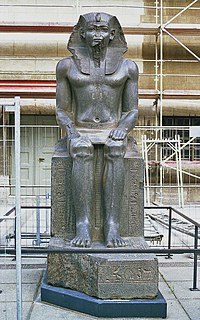
Nubkaure Amenemhat II was the third pharaoh of the 12th Dynasty of Ancient Egypt. Although he ruled for at least 35 years, his reign is rather obscure, as well as his family relationships.
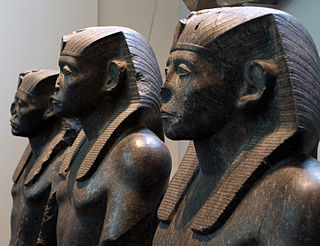
Khakaure Senusret III was a pharaoh of Egypt. He ruled from 1878 BC to 1839 BC during a time of great power and prosperity, and was the fifth king of the Twelfth Dynasty of the Middle Kingdom. He was a great pharaoh of the Twelfth Dynasty and is considered to be, perhaps, the most powerful Egyptian ruler of the dynasty. Consequently, he is regarded as one of the sources for the legend about Sesostris. His military campaigns gave rise to an era of peace and economic prosperity that reduced the power of regional rulers and led to a revival in craftwork, trade, and urban development. Senusret III was among the few Egyptian kings who were deified and honored with a cult during their own lifetime.
The Thirteenth Dynasty of ancient Egypt is often combined with Dynasties XI, XII and XIV under the group title Middle Kingdom. Some writers separate it from these dynasties and join it to Dynasties XIV through XVII as part of the Second Intermediate Period. Dynasty XIII lasted from approximately 1803 BC until approximately 1649 BC, i.e. for 154 years.

Khasekhemre Neferhotep I was an Egyptian pharaoh of the mid Thirteenth Dynasty ruling in the second half of the 18th century BC during a time referred to as the late Middle Kingdom or early Second Intermediate Period, depending on the scholar. One of the best attested rulers of the 13th Dynasty, Neferhotep I reigned for 11 years.

Khaneferre Sobekhotep IV was one of the more powerful Egyptian kings of the 13th Dynasty, who reigned at least eight years. His brothers, Neferhotep I and Sihathor, were his predecessors on the throne, the latter having only ruled as coregent for a few months.
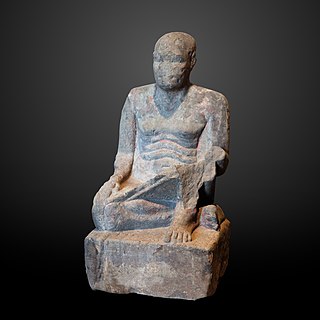
Mentuhotep was an Ancient Egyptian official and treasurer under the 12th dynasty pharaoh Senusret I. Mentuhotep is one of the best attested officials of the Middle Kingdom period. There is a series of statues found at Karnak, showing him as a scribe. On these he has been given the title of overseer of all royal works, which would suggest that he was involved in overseeing the construction of the temple at Karnak. At el-Lisht he had a large tomb next to the pyramid of Senusret I. When it was found it was badly damaged, but there are remains of high quality reliefs and fragments of statues. The burial chamber still contained two sarcophagi, one smashed and the other one well preserved, made of granite and with brightly painted interiors.
Senusret was an Ancient Egyptian official who was a vizier during the last years of king Senusret I's rule and in the first years of Amenemhet II. Senusret is known from a stela found in Abydos, which is dated to year 8 of Amenemhet II. He also appears in biographical inscriptions in the tomb of the governor Amenemhat at Beni Hasan, where it is reported that he was on a mission to Koptos. The inscription reports events under Senusret I.
Khenemetneferhedjet(ẖnm.t nfr-ḥḏ.t) was an ancient Egyptian queenly title during the Middle Kingdom. It was in use from the 12th to the early 18th dynasty. During the 12th dynasty it also occurred as a personal name. Its meaning is “united with the white crown”. The white crown was one part of the double crown of Egypt and is usually interpreted to have represented Upper Egypt, but it is also possible that while the red crown represented the king's earthly incarnation, the white crown represented the eternal, godlike aspect of kingship.
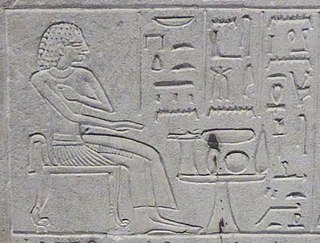
Senebi was an Ancient Egyptian treasurer under the 13th Dynasty kings Neferhotep I and Sobekhotep IV. Senebi belongs to the best attested officials of the 13th Dynasty. The treasurer was one of the most powerful officials at the royal court, and therefore Senebi was—next to the vizier—the most powerful official under these kings.

Ikhernofret was an ancient Egyptian treasurer of the 12th Dynasty, under king Senusret III until the early years of Amenemhat III. On his monuments he bears several important titles, including overseer of the double treasury, overseer of the double gold house, royal sealer and his main title treasurer. Ihkernofret is known from several stelae found at Abydos. One of these stelae contains a biography. This stela is now in the Egyptian Museum of Berlin. According to its text, Ikhernofret grew up at the royal court. When he was 26, he became friend of the king, which was most likely a special honor. However, the text of the stela is of special importance as it reports the arrangement by Ikhernofret of a festival for Osiris at Abydos.
Senankh was an Ancient Egyptian treasurer during the Twelfth Dynasty, under king Senusret III. Senankh is so far only known from a rock inscription carved on the island of Sehel, south of Aswan. Senankh bears the titles royal sealer, sole friend and leader of works in the whole land. His main title is treasurer. The inscription is dated in the 8th year of Senusret III and reports the digging or clearing of a canal with the name beautiful are the ways of Khakaure. Khakaure is the throne name of Senusret III.

Menwadjre Sihathor was an ephemeral ruler of the 13th dynasty during the late Middle Kingdom. Sihathor may never have enjoyed an independent reign, possibly only ruling for a few months as a coregent with his brother Neferhotep I. According to egyptologist Kim Ryholt, Sihathor died in 1733 BC while Detlef Franke dates his short reign to 1694 BC. His tomb is likely to be the unfinished one located between the tombs of his brothers S9 and S10, in Abydos.

S 10 is the modern name given to a monumental ancient Egyptian tomb complex at Abydos in Egypt. The tomb is most likely royal and dates to the mid-13th Dynasty. Finds from nearby tombs indicate that S10 suffered extensive state-sanctioned stone and grave robbing during the Second Intermediate Period, only a few decades after its construction, as well as during the later Roman and Coptic periods. These finds also show that S10 was used for an actual burial and belonged to a king "Sobekhotep", now believed to be pharaoh Sobekhotep IV. According to the Egyptologist Josef W. Wegner who excavated S10, the tomb might originally have been capped by a pyramid, although Aidan Dodson states that it is still unclear whether S10 was a pyramid or a mastaba.
The Wadi el-Hudi is a wadi in Southern Egypt, in the Eastern Desert. Here were ancient quarries for amethyst. The Wadi el-Hudi is important in archaeology for its high number of rock inscriptions and stelae, mainly dating to the Middle Kingdom, as amethyst was especially popular in this period. The Wadi el-Hudi ends in the Nile valley a few kilometers north of Aswan and is coming there from the South-East. The ancient amethyst quarries are about 20 kilometres south-east from Aswan.
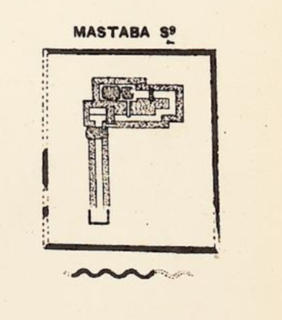
S 9 is the modern name given to a monumental ancient Egyptian tomb complex at Abydos in Egypt. The tomb is most likely royal and dates to the mid-13th Dynasty, during the late Middle Kingdom. Finds from the area of the tomb indicate that S9 suffered extensive, state-sanctioned stone and grave robbing during the Second Intermediate Period, only a few decades after its construction, as well as during the later Roman and Coptic periods. Although no direct evidence was found to determine the tomb owner, strong indirect evidence suggest that the neighbouring and slightly smaller tomb S10 belongs to pharaoh Sobekhotep IV. Consequently, S9 has been tentatively attributed by the Egyptologist Josef W. Wegner to Sobekhotep IV's predecessor and brother, Neferhotep I . According to Wegner, the tomb might originally have been capped by a pyramid.













